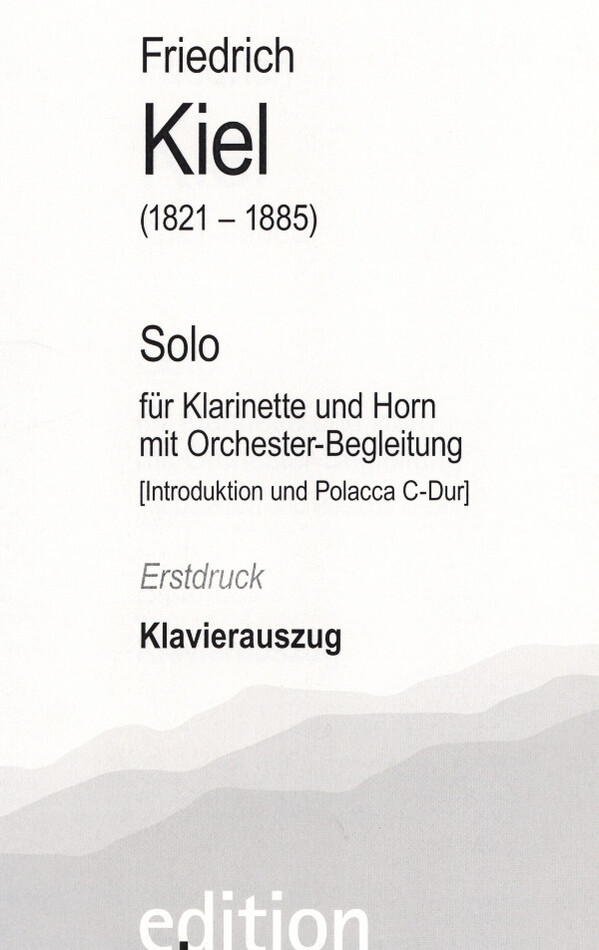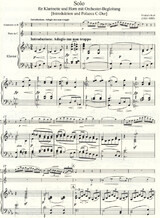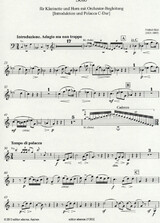 ebenos musik verlagStil:
ebenos musik verlagStil:  RomantikAusgabe: NotenArt-Nr.: H2419 / EE 213030 Level:
RomantikAusgabe: NotenArt-Nr.: H2419 / EE 213030 Level:
The composer Friedrich Kiel (1821-1885) lived in Berlin from 1842 until his death. Initially active as piano teacher and sometime pianist, the premiere of his Requiem, Op. 20 brought a decisive breakthrough and sudden fame. Nearly all of Kiels works appeared in print during his Berlin years. He was highly prized not solely for his compositional output, which consisted of piano, sacred and chamber music (mostly with piano). His academic career was equally successful, and he earned honors and distinction as a professor of composition at the Stern Conservatory, the Hochschule for Music, and the Academy of the Arts. His many students included A. Bungert, Ch. V. Stanford, W. Berger, H. Kaun and I. J. Paderewski. Kiel, influenced by Bachs polyphony, stands stylistically in the Schumann and Brahms tradition, but he also valued the composers of the New German School and remained neutral when the two parties came in conflict.
For his own training Kiel could thank the support of Prince Albrecht I of Sayn-Wittgenstein-Berleburg (1777-1851). The attention to music at the court of Berleburg, though far from the great cultural centers, was exemplary. Born the son of a village teacher in Puderbach near Laasphe, Kiels talent soon emerged. In 1835 he became a violin pupil of Prince Karl, the brother of Prince Albrecht. After a year and a half of study with flautist-composer Caspar Kummer (1795-1870) in Coburg, Kiel became concertmaster of the ensemble of the Berleburg Court in 1840. A scholarship from Friedrich Wilhelm IV of Prussia in 1842 enabled three years of composition study with S. W. Dehn in Berlin.
The Solo for clarinet and horn with orchestra accompaniment [Introduction and Polacca in C major], is published here for the first time based on Kiels (undated) manuscript score. It appeared without opus number during his Berleburg years. As his compositions received immediate performance, this gave Kiel the chance to experiment and gather know-how. Remarkable in the Solo is the wind Harmonie instrumentation though typically two apiece, in the tuttis only one clarinet and one horn are seen, the other voices apparently intended to be played by the solo parts. Also notable is the technically flamboyant, demanding solo clarinet part. The above lead to the presumption that the composer new exactly which forces, and even the exact musician for whom he was writing. Though further solos with orchestra date from these years, they constitute an absolute exception to Kiels concert creations from his Berlin period. The Solo for clarinet and horn offers a glimpse into the workshop of a man who would soon become one of the most respected composers of his time.
In this first publication of the score, corrections have been made to the manuscript version without further specification. These are limited to clarification of unreadable sections and logical extensions of missing articulations and dynamics. The edition is supplemented by a version for clarinet, horn, and piano as well by a transposed part for solo horn in F. Furthermore, in the solo clarinet part a possible change into clarinet in A has been furnished.







